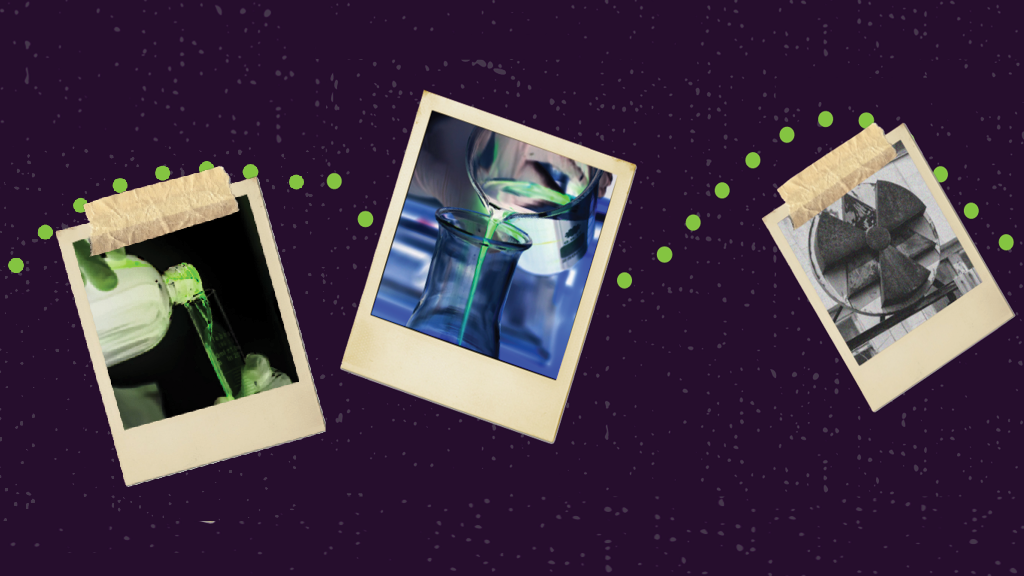There have been concerns surrounding COVID-19 and the origins of the virus. For the most part, scientists agree that it came from the transmission from animals (bats) to humans. However, because there is no official ruling from the Centers for Disease Control and Prevention (CDC), the uncertainty is leaving room for concern among the populace.
Please note that this piece is not to put forth that COVID-19 originated from a lab conspiracy, but aims to inform about how lab leaks can happen and what we’ve done to build on our biosecurity to make sure it doesn’t happen again.
Lab Leaks: The Beginning
It’s important to note, first and foremost, that the descriptor of ‘lab leak’ isn’t someone literally leaking something from their lab in nefarious intentions to spread a disease.
Katherine Eban, an investigative journalist whose work focused on public health, most notably her work on COVID-19's origins, noted in an interview the different ways a pathogen can be ‘leaked’ to the populace. “[Field researchers] brought back natural samples into a laboratory and that natural sample somehow leaked, or a laboratory researcher got infected simply through aerosol transmission.”
Many times, lab leaks are the result of human error without any nefarious intentions.
Take the cases of smallpox in Britain from 1963–1978. Prior to it's eradication in the late 1970s, smallpox was a dangerous disease that killed over 300 million people worldwide. To combat this, countries like the United States and Britain conducted routine vaccinations to protect their citizens. The virus's presence was one of the reasons why British laboratories were still experimenting on samples of smallpox in order to refine their vaccines of the disease.
The reason scientists research ‘eradicated’ viruses like smallpox is to grab a better understanding of patterns of spread that can help prevent future outbreaks, noted by a "Nature Review Genetics" paper.
The aforementioned paper concluded how researching on previous pathogens can help form a better understanding on how diseases interact with humans over the years.
However, in the case with smallpox in the mid-1900s, it was bit more dangerous. Britain ended their compulsory vaccinations in the '40s, so a majority of their citizens were left unprotected against the disease.
It was a combination of both bad luck and lack of security while working with these substances that lead to a laboratory assistant being infected with the virus while harvesting it from eggs. During this era, there were no isolation cabinets — an enclosed workspace to handle dangerous pathogens like viruses without fear of cross contaminating substances or the workers there of — and it was done on an open surface. This led to two visitors being infected and dying.
Despite the tragedy from this particular outbreak, it later lead to the foundation of our current Biosafety Laboratory level protocols, such as having isolation cabinets and wearing gowns and gloves for protection. It also included training individuals to handle these materials to make sure that these pathogens aren’t mistreated by the untrained.
The smallpox epidemic was later declared eradicated in 1980 and nations since don’t require the vaccine to be given routinely. However, what does this mean in our current COVID-19 environment?
Grasping for Reason
One of the main reasons why the lab leak theory is so popular is because, simply, the psychology of conspiracy theories.
Karen Douglas and her group of researchers at the Association for Psychological Science researched the psychology of conspiracy theories. They arrived at the conclusion that there are three common reasons to believe in a theory: the want to understand our environment, to be in control of said environment and the influence of a social group.
People want an explanation to the unknown and, for the most part, a lot of people are unsatisfied with the idea that COVID-19 came from a natural evolution in the wild and an unlucky person got infected. For many people, it’s much more comforting to villainize a group of people that you have to fight against or have a reason for a tragedy like COVID-19.
It doesn’t help that many scientists are still unsure where the leak originated from. But, for people who believe it would be better to just declare it from bats, that’s still not the best-case scenario either. For many researchers, such as David Relman, it’s better to investigate the improbable than leaving it a mystery, so that way we can avoid another outbreak of this magnitude to occur.
“If we scientists are not forced to confront the issues of laboratory safety and risky research in a serious and sustained manner, history suggests that we will not do so,” wrote Relman in reference to the 2012 controversy where scientists were studying a deadly bird flu, which was later intervened by the government to add further precautions in case of an outbreak.
“If we scientists are not forced to confront the issues of laboratory safety and risky research in a serious and sustained manner, history suggests that we will not do so.”
Whatever the explanation may be, from bats to a planned leak to what have you, there is always going to a possibility of uncertainty that we may have to swallow.
Stephen Carter said it best in his piece on lab leaks: “In the case of [COVID-19], we must prepare ourselves for the possibility that we may never know the precise origins of a pandemic that has killed millions.”
“In the case of [COVID-19], we must prepare ourselves for the possibility that we may never know the precise origins of a pandemic that has killed millions.”
In the end, the people only have few choices to combat COVID-19, and that choice could extend the pandemic, or shorten it.








